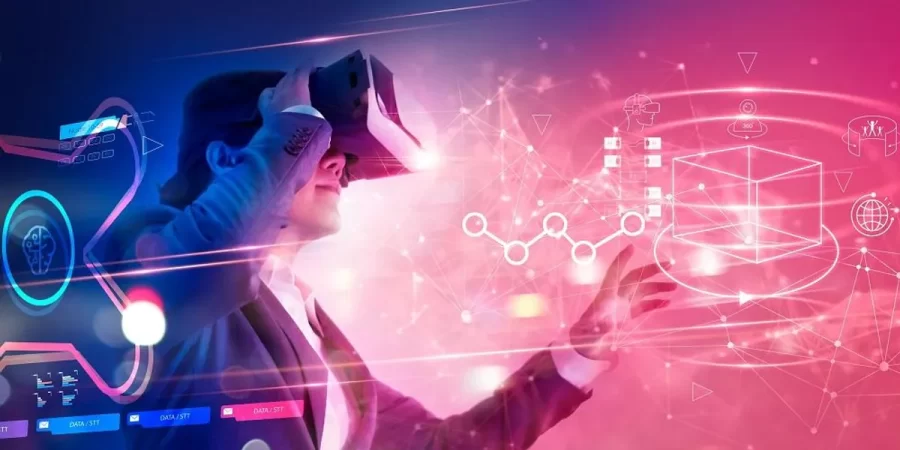The concept of the metaverse has been around for a long time, but it has gained more attention recently due to advancements in virtual reality, augmented reality, and other technologies. The metaverse is a virtual world where people can interact with each other and participate in various activities. Socializing in the metaverse involves using avatars, communities, and events. In this article, we will explore these aspects of socializing in the metaverse and discuss how they are changing how we interact online.
What is the Metaverse?
The metaverse is a term used to describe a virtual world that exists within a computer-generated environment. It is essentially an extension of the internet, where people can interact with each other in a virtual space. The metaverse can be accessed through various platforms, such as virtual reality headsets, smartphones, or computers. In the metaverse, people can create avatars, which are digital representations of themselves, and interact with other people who also have avatars.
Avatars: Creating a Virtual Identity
In the metaverse, avatars are the primary way people represent themselves. They are digital representations of real people and can be customized to reflect the user’s appearance, personality, and interests. Avatars can be designed to look like anything, from a human-like figure to a cartoon character or even an animal. The customization options for avatars are virtually endless, allowing users to create a unique representation of themselves in the virtual world.
Creating an avatar is often the first step to socializing in the metaverse. It allows people to express their creativity, personality, and interests while interacting with others. Avatars provide a level of anonymity that is not available in the physical world, allowing people to experiment with different aspects of their identity without fear of judgment.
Communities: Connecting with Like-minded People
The metaverse provides a space for people to connect with like-minded individuals from all over the world. Communities in the metaverse are similar to social media groups or forums but exist in a virtual space. These communities can be based on shared interests, hobbies, or professions. For example, there may be a community of gamers who come together to play virtual games or a community of artists who share their work with each other.
Communities in the metaverse offer several benefits. They provide a sense of belonging and connection with others who share similar interests. They also offer opportunities for collaboration and learning from others. In the metaverse, communities can be more diverse and inclusive than in the physical world, as people worldwide can participate regardless of their location or background.
Events: Participating in Virtual Activities
Events are a major part of socializing in the metaverse. They can be anything from concerts to conferences to virtual weddings. Events provide an opportunity for people to come together and participate in shared experiences. In the metaverse, events can be more immersive than in the physical world, as they can incorporate elements of virtual reality and augmented reality.
Virtual events can also be more accessible than physical events, as they do not require travel or physical presence. This can make events more inclusive for people with disabilities or those who live in remote areas. Virtual events can also be more cost-effective than physical events, as they do not require venue rental or catering expenses.
The Future of Socializing in the Metaverse
The metaverse is still in its early stages, but it has the potential to transform the way we socialize and interact with each other online. As technology advances, the metaverse will become more immersive and realistic, offering new opportunities for socializing and entertainment.
One potential development is integrating artificial intelligence (AI) into the metaverse. AI could create more realistic and intelligent avatars, making them more personalized and responsive to user behaviour. AI could also facilitate more meaningful interactions between avatars, creating a more authentic social experience.
Another potential development is the integration of blockchain technology into the metaverse. Blockchain could enable secure and transparent transactions within the virtual world, such as buying and selling virtual assets or digital currencies. This could create new economic opportunities within the metaverse and provide a more equitable distribution of wealth.
However, there are also concerns about the impact of the metaverse on society. Some critics worry that the metaverse could lead to increased isolation and a loss of social skills in the physical world. Others worry about the potential for addiction and its impact on mental health. As with any technology, there are both benefits and risks, and it is up to individuals and society as a whole to navigate these challenges.
Conclusion
Socializing in the metaverse is a rapidly growing trend, offering new opportunities for connection, creativity, and entertainment. Avatars, communities, and events are the building blocks of socializing in the metaverse, creating a unique virtual experience for users. As technology continues to advance, the metaverse will become more immersive and realistic, offering new opportunities for socializing and entertainment. However, it is important to be mindful of the potential risks and challenges associated with the metaverse and approach it critically and ethically.
I’m a highly experienced and successful crypto author with over 10 years of experience in the field. I have written for some of the most popular crypto publications, including Bitcoin Magazine, CoinDesk, and Crypto Insider. I have also been featured in major mainstream media outlets such as Forbes, Wall Street Journal, and Business Insider.
